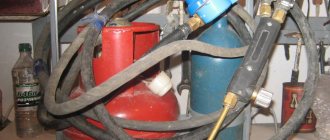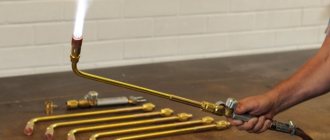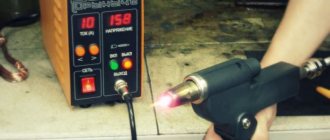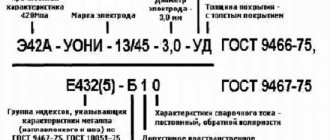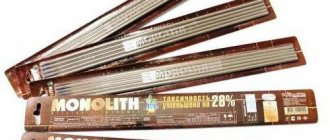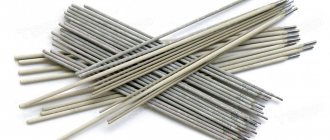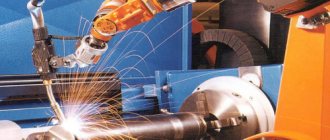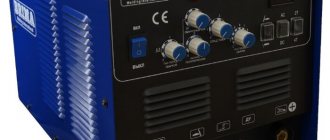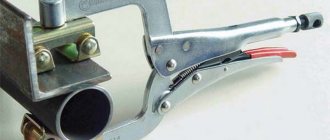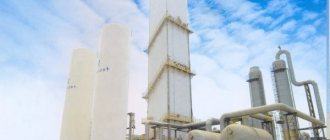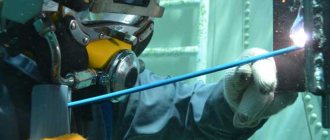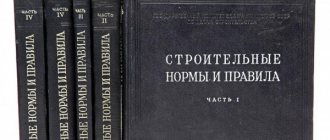HELPFUL INFORMATION:
Is it possible to reduce welding costs and improve welding quality at the same time?
YES! YES, and again YES!
Welding technology in a protective environment using welding gas mixtures significantly improves the quality of work and the efficiency of welding work. The use of argon-based gas mixtures has become a new level in improving welding processes!
Advantages of using gas welding mixtures based on argon compared to carbon dioxide: An increase in the amount of deposited metal per unit of time, as well as a decrease in losses of electrode metal due to spattering. Reducing the amount of spatter adhesion (spattering) in the area of the welded joint and, as a result, reducing the labor intensity of their removal by up to 95%. Increasing the density and ductility of the weld metal. Increasing the strength of the welded joint. The welding process is stable even with some unevenness in the supply of welding wire, as well as the presence of traces of technological lubricant and rust on its surface. Hygienic working conditions at the welder's workplace are improved due to a significant reduction in the amount of emissions of welding aerosols and fumes.
Inert
They do not interact chemically with metals and are practically insoluble in metals.
Argon (Ar) is a colorless, odorless, non-flammable, non-toxic gas, almost 1.5 times heavier than air. Insoluble in metals in both liquid and solid states. It is produced (GOST 10157-79) in two grades: highest and first.
The highest grade gas contains 99.993% argon, no more than 0.006% nitrogen and no more than 0.0007% oxygen. Recommended for welding critical metal structures made of active and rare metals and alloys, non-ferrous metals.
First grade gas contains 99.98% argon, up to 0.01% nitrogen and no more than 0.002% oxygen. Recommended for welding steel and pure aluminum.
Helium (He) is a colorless, odorless, non-toxic gas, much lighter than air and argon. It is produced (GOST 20461-75) in two grades: high purity (up to 99.985%) and technical (99.8%).
It is used less frequently than argon due to its scarcity and high cost. However, at the same current value, an arc in helium releases 1.5 - 2 times more energy than in argon. This contributes to deeper metal penetration and a significant increase in welding speed.
Helium is used for welding chemically pure and active materials, as well as alloys based on aluminum and magnesium.
Nitrogen (N2) is a colorless, odorless and tasteless gas, non-toxic. Used only for welding copper and its alloys, in relation to which nitrogen is an inert gas. It is produced (GOST 9293-74) in four grades: highest - 99.9% nitrogen; 1st - 99.5%; 2nd - 99.0%; 3rd - 97.0%.
Best working conditions:
Significantly less smoke, welding aerosols and harmful gases keep the welder healthy and allow him to work with greater attention for a long time. The risk of developing an occupational disease for welders—pulmonary silicosis—is reduced.
The time has come to use advanced technologies and new products that allow manufacturers to ensure high quality work and production efficiency, improve and protect the working conditions of their workers.
carries out the supply of welding gas mixtures, filling of cylinders and prompt delivery by specialized transport.
Application area
Welding gas mixtures are used primarily for cases where work is carried out with thin parts, non-ferrous metals and difficult-to-weld alloys. They are used in all cases where the use of a semi-automatic device is necessary. Protection from oxygen from the atmosphere is almost always required. Without the use of gases, work cannot be carried out. The only exceptions are brands of self-shielding wire, which do not require gas mixtures for welding. The main areas of use are repair shops, production of cars and other equipment, mechanical engineering, various industrial enterprises, chemical and oil industries.
Gas consumption when performing welding work
The flow rate of the protective gas mixture, measured in liters per minute, is adjusted manually using a rotameter. It is recommended to set the parameter (in l/min) corresponding to the burner diameter (in mm). When using household or semi-professional equipment, costs are no more than 10-15 l/min. An increase in the parameter leads to the saturation of the melt with gas bubbles, and with excessive savings, the protective flow is destroyed with the subsequent penetration of atmospheric air into the working area.
Application of Ar + He mixture
Helium in combination with argon is often used for welding copper (light) alloys. Welding methods: TIG and MIG. Chromium-nickel steel and aluminum can be cooked using exactly the same mixture.
Surely the reader has a question: “Is it possible to independently mix these gases and achieve the desired effect?” The answer is unlikely to console the home-grown welder.
The fact is that gases can be mixed directly in the working environment (by screwing on the gearboxes). However, in this case you are unlikely to be able to achieve effective concentrations of the mixture components. The final result of the welding process will certainly suffer from this.
The video shows an example of a welding mixture:
Compositions of welding mixtures for different types of welding
- Ar + CO2. This composition is effective when welding low-carbon steels. The density of welded joints increases as a result of a decrease in weld porosity. The consumption of electrode metal is reduced due to reduced spattering. With a high carbon dioxide content (20%), thick-walled parts can be welded, even if the surface is contaminated.
Argon and carbon dioxide
Here is a video of welding with this composition:
- Ar + O2. Suitable for MAG and TIG welding of high-alloy and acid-resistant steel. The protective welding mixture, which includes argon and oxygen, contributes to the stability of the electric arc, deep penetration and smoothness of the seam.
Argon and oxygen
- Ar + He. The use of this composition is suitable for welding light and copper alloys with high thermal conductivity using TIG and MIG methods. Also used when working with chromium-nickel steel and aluminum.
Argon and helium
— Ar + H. Promotes intensive deposition due to good concentration of energy at the point of contact with the material. Used as a shielding gas for working with nickel alloys and stainless steel using the TIG method.
Argon and hydrogen
— Ar + active gases. Used in manual and automatic MAG method when working with alloy steel. Provides double savings on consumables. During the work, there is virtually no metal spattering, and the seam is smooth and neat, not requiring additional machining.
Argon and active gases
You will find more articles about welding mixtures in this section.
Welding mixtures with helium: feasibility of use
Helium (He) is the second lightest elemental gas after hydrogen. Colorless, odorless, tasteless, non-toxic and chemically inert, helium is non-flammable and has high thermal conductivity. It is used to provide an inert gas shield and prevent oxidation during metal welding in aluminum, stainless steel, copper and magnesium alloys. Helium is used together with argon or a few percent of CO2 or O2 for electric arc welding (GMA) of stainless steel. Either pure or mixed with argon, it is used as a shielding gas for gas tungsten arc (GTA) welding and gas shielded gas (MIG) welding. Helium welding mixtures are generally preferred over pure argon for joining areas of the base metal that have high thermal conductivity. Helium can be used to reduce ozone formation when welding aluminum. Helium also has several unique characteristics that make it advantageous for welding: high ionization, thermal conductivity and inertness. All this together provides higher welding performance and quality welds. This in turn leads to increased productivity and reduced welding costs.
Since the 1960s in America, engineers have been investigating the effects of helium in MIG welding. During the study, they developed a three-component helium mixture containing 90% He - 7.5% Ar - 2.5% CO2. Low carbon dioxide content to reduce carbon absorption and improve corrosion resistance, especially in multi-pass welds. The addition of argon and carbon dioxide ensures good arc stability and melting depth. Helium provides high thermal conductivity to overcome the "sticky" nature of the stainless steel weld pool. This composition provided significant benefits and increased weld fluidity, mainly on thick-walled stainless steel parts and in high-performance welding processes. Another mixture (66% Ar - 26.5% He - 7.5% CO2) has been developed for pulsed arc welding of both carbon and low alloy steels. It can be used on all thicknesses in any position. And it has good mechanical properties to control the welding area. This is a higher speed mixture compared to a two-component one.
Mixtures of three gases are usually used for special applications, with two-component gases being the most popular and available. Mixtures of argon and helium are used primarily on non-ferrous metals such as aluminum and copper to increase heat dissipation. Typically, helium is used in ratios of 25 to 75 percent with a balance of argon. In general, the thicker the base metal, the higher the percentage of helium should be. By adjusting the percentage of gases, we can influence the heat distribution to the weld, thereby determining the cross-sectional shape of the weld metal, which is also an important parameter in some applications. Tests have shown that when pure argon is used, the relatively narrow cross-section of the weld has a more porous structure. When helium is added to argon, the penetration area expands and helps reduce the level of porosity in the finished weld. As the percentage of helium increases, arc voltage, spatter, and weld width to depth ratio increase while porosity in aluminum is minimized. In this case, argon must be at least 20% when mixed with helium.
Comparison of weld penetration in cross section with different shielding gases
At 50% helium, the mixture is suitable for high-speed mechanized welding of non-ferrous materials with a thickness not exceeding 17 mm. 75% helium to argon - this mixture is for mechanized welding of aluminum with a thickness of more than 10 mm in the lower position. These mixtures are widely used for TIG, MIG welding as helium provides a wider and deeper weld.
The most common ratio of 25-30% helium to argon creates a mixture that is used for welding non-ferrous metals where increased heat input is required and the appearance of the weld is of paramount importance. Adding helium to argon increases the energy supply to the weld pool, making it more fluid. This in turn improves the penetration profile and fusion welding performance. Both of these features help reduce the likelihood of defects and the need for rework.
Advantages of a mixture of argon and helium:
— reducing the level of porosity, leading to higher quality of the finished product, reducing the number of modifications;
— minimizing defects in various parameters: increasing the mechanical properties and appearance of the seam;
— reduction of production costs and consumables;
- improved welding for stronger mechanical properties;
— increased welding speed, which reduces labor costs.
The addition of helium usually increases the fluidity of the weld pool, the shape and size of which determines the shape and size of the welds. The latter largely determine the performance characteristics of the resulting compounds. A welded joint made using a mixture of helium and argon usually does not require post-weld cleaning, which also reduces the time required to work with the product. When using mixtures with helium, there are more opportunities to influence this process, improving both the welding process itself and the finished product.
Welding seams at different percentages of argon and helium
Welding mixtures with helium have been used abroad for more than 70 years. All major key gas companies have their own mixtures as a separate product under a specific trade name (for example, helistar mixture from Praxair, varigon - Linde, etc.). In Russia, these mixtures are rarely used due to the high cost of helium, so it is not always easy to buy a ready-made mixture with the required percentage. Helium is more expensive than other shielding gases and requires a higher flow rate than argon. Before using helium, you need to make sure that any benefit outweighs the additional cost. But the modern market offers another option - gas mixers, which allow you to make the finished mixture yourself. Thus, the IBEDA brand has mixers with precise fixed settings, calibrated at the factory, which guarantee the exact percentage of the mixture at the output. “These mixtures are relevant for welding aluminum with large metal thicknesses. In Europe, the most commonly used ratio is Ar 70% / He 30%, sometimes 50/50, and very rarely 30/70,” commented Andreas Berg, Head of Sales at IBEDA.
The choice of mixture is usually based on the specific application and performance to be achieved. In many cases, it is possible to increase welding speed and improve the quality of welds by using mixtures of helium and argon. Therefore, the increased cost of helium mixtures is offset by lower production costs, minimized waste and increased productivity.
You can produce high-quality mixtures of gases with the addition of helium yourself thanks to reliable German mixers - choose here
Get a consultation by phone. or send a request to
Find the printed version of the article in GasWorld magazine. Helium. Cryotechnology (September/October 2019), p. 28-29
